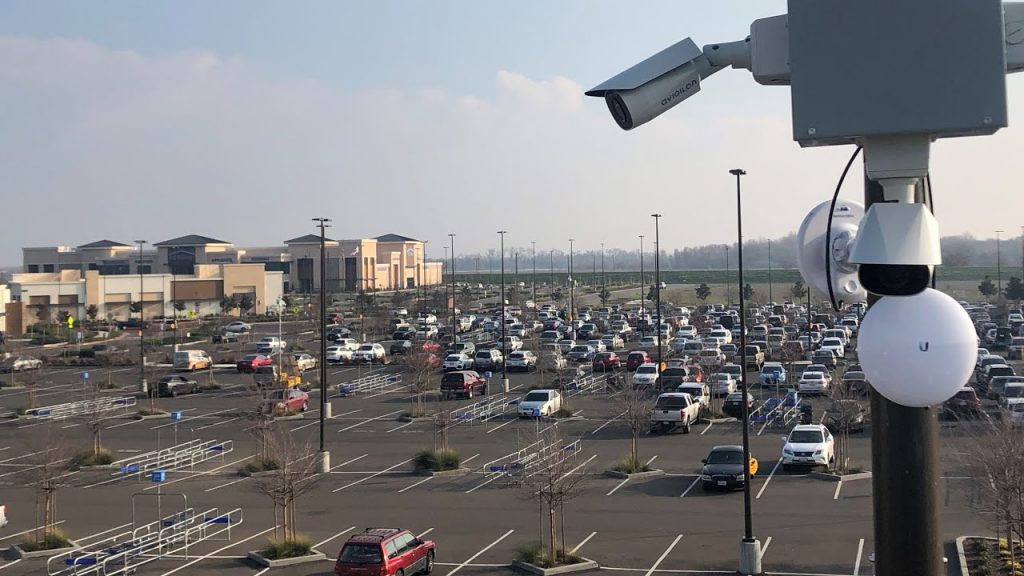
In the realm of security and surveillance in Western Canada, the emergence of bullet cameras marks a significant advancement in Alberta, offering unique advantages and functionalities distinct from other camera types. This rise in popularity is attributed to their specialized design and robust features, tailored to meet diverse surveillance needs.
Through this detailed exploration, explore bullet cameras, address common queries, and shed light on their capabilities.
What is a Bullet Camera?
A bullet camera is a type of video surveillance camera that is typically small and shaped like a bullet. These cameras are known for their compact size and long, cylindrical design, which makes them ideal for outdoor use. They are named for their distinctive shape, which sets them apart from dome and turret cameras. Bullet cameras are often used in environments that require a discrete, yet visible security presence.
Key Features of Bullet Cameras
Bullet cameras come with a variety of features, making them versatile for many situations. Some key features include:
- Weatherproof Casing: Most bullet cameras are designed with a durable casing that can withstand harsh weather conditions.
- Long Range Visibility: They are often equipped with long-range lenses, offering clear video over greater distances.
- Night Vision: Equipped with infrared LEDs, bullet cameras can capture clear video even in low-light conditions.
- Easy Installation: They can be mounted on walls or ceilings and are easy to position due to their shape and design.
What is the Range of a Bullet Camera?
The range of a bullet camera, a crucial factor in its effectiveness, can vary significantly based on the quality of its lens and sensor. This range is not just a matter of distance but also involves the clarity and detail of the images captured over those distances. Typically, standard bullet cameras can effectively cover distances ranging from 75 to 100 feet. This range is usually sufficient for most residential and small commercial settings, allowing for clear surveillance of driveways, entryways, and similar areas.
However, when it comes to higher-end models of bullet cameras, the range can be considerably more extensive. These advanced cameras are equipped with superior lenses and sensors, enhancing their capability to monitor larger spaces. Such an extended range makes these cameras particularly well-suited for monitoring expansive outdoor spaces like large commercial properties, parking lots, public parks, or agricultural lands.
How Far Can Security Cameras See at Night?
The night vision capabilities of bullet cameras are among their most defining and essential features, especially for surveillance that requires around-the-clock monitoring. Typically, standard bullet cameras are capable of seeing up to 100 feet in complete darkness, a range that is largely sufficient for many commercial security needs. This capability is facilitated by the inclusion of infrared (IR) illuminators that emit light invisible to the naked eye but detectable by the camera’s sensor.
Advanced models of bullet cameras may offer enhanced night vision capabilities. These cameras can see beyond the typical 100 feet range, providing clear footage even at greater distances. This is particularly useful in expansive outdoor environments such as industrial areas, large estates, or public spaces where monitoring larger areas at night is crucial.
Another important aspect of night vision in bullet cameras is the quality of the image processing technology. Cameras with advanced image processing can reduce noise and enhance clarity in low-light conditions, resulting in crisper and more detailed night-time images.
Applications of Bullet Cameras
Bullet cameras are suitable for a variety of settings, including:
- Residential Properties: They can be used to monitor driveways, entrances, and yards.
- Commercial Spaces: Ideal for overseeing parking lots, warehouses, and perimeters.
- Public Areas: Useful for monitoring parks, streets, and public buildings.
Choosing the Right Bullet Camera
When selecting a bullet camera, consider:
- Resolution: Higher resolution cameras offer clearer images.
- Lens Type: Decide between fixed or varifocal lenses based on the area you need to cover.
- Infrared Range: Ensure the IR range is sufficient for your night-time monitoring needs.
- Weather Resistance: Look for cameras with high IP ratings if they are to be used outdoors.
Installation Tips
Installing a bullet camera effectively is crucial for optimal performance. Some tips include:
- Positioning: Mount the camera at an appropriate height and angle to cover the desired area.
- Avoid Obstructions: Ensure there are no obstructions like branches or signs blocking the camera’s view.
- Lighting: Consider the lighting conditions of the area to avoid glare or backlight issues.
Maintaining Your Bullet Camera
Privacy Concerns and Legal Compliance
Contact Tridon Communications Today
Bullet cameras offer a reliable, versatile option for security and surveillance. Whether for home or business use, understanding their features, capabilities, and proper installation can help you make an informed decision and ensure effective surveillance. Remember, the key to a successful security system is not just the technology but also its appropriate and ethical use. Contact one of our experts at Tridon Communication today for more information.



